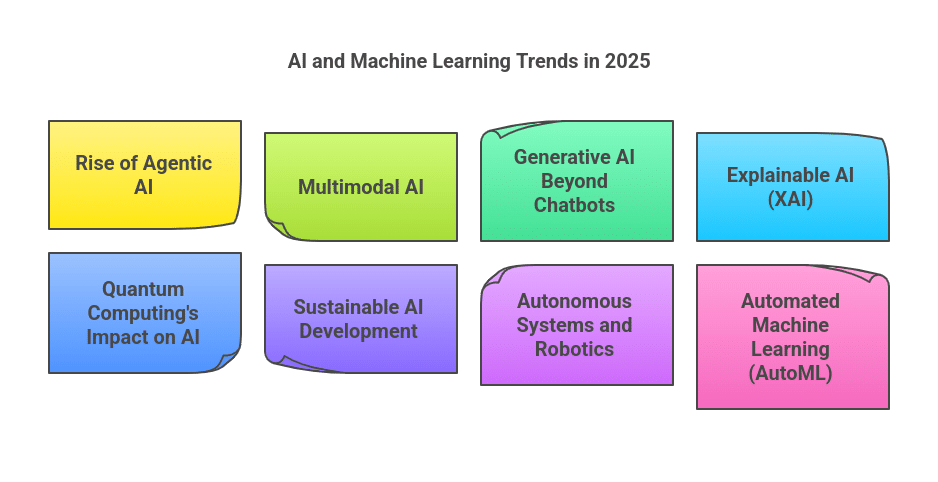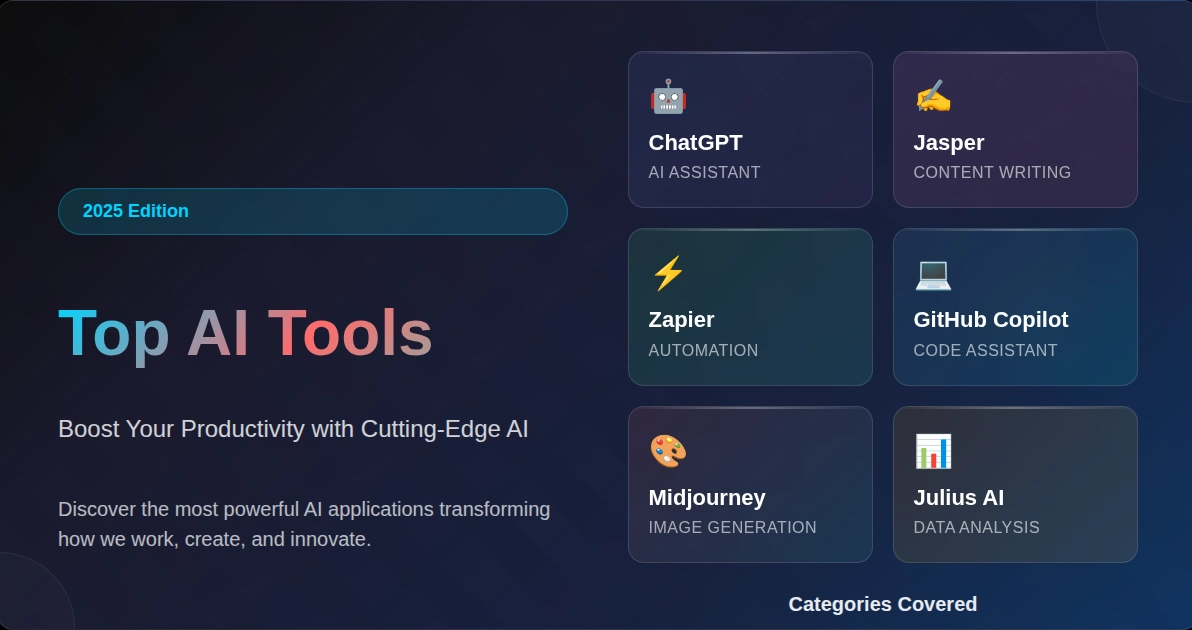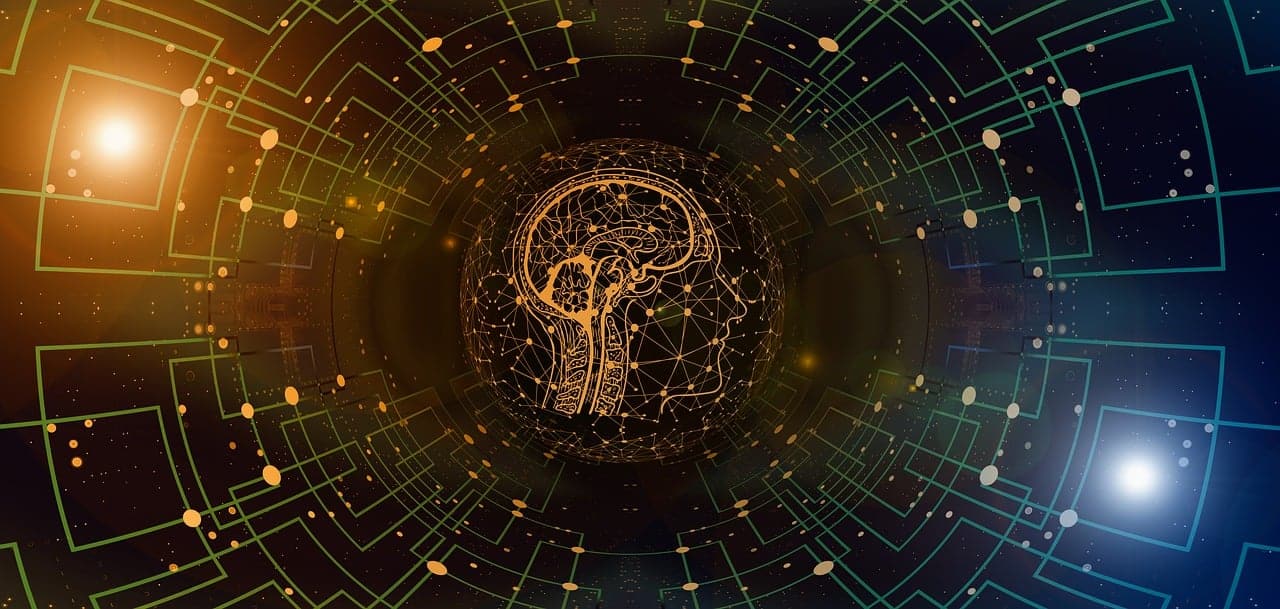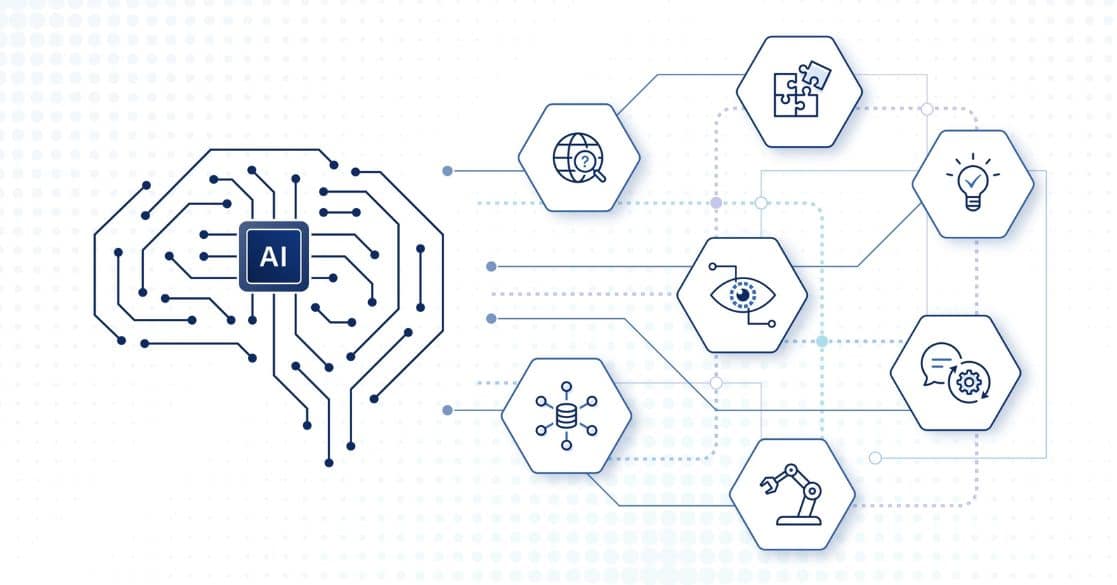Artificial Intelligence (AI) is rapidly changing industries and our daily life. Moving toward 2025, it is essential for businesses and individuals alike to track the latest AI and machine-learning trends.
This article will explore the key AI trends and trends of artificial intelligence and machine learning expected to dominate in 2025, highlighting why they matter and what to expect.
Understanding the AI Landscape
Artificial intelligence (AI) is designing computer systems to perform tasks termed intelligent if accomplished by a person operating in complex or easy circumstances. These tasks include reasoning, problem-solving, learning from data, understanding language, and making decisions.
AI systems use algorithms and vast amounts of data to mimic human cognitive functions, evolving and improving over time. AI is making machines smarter and more autonomous, impacting sectors from healthcare and finance to entertainment and manufacturing.
The Future of Machine Learning
The global machine learning market is projected to reach USD 419.94 billion by 2030, as per a new report by Grand View Research, Inc. The market is expected to expand with a CAGR of 34.8% for the duration of the 2023 to 2030 forecast period. In the coming years, ML is projected to:
- Deliver advanced conversational agents
- Automate manufacturing and logistics processes
- Provide a structured approach to ethics
- Contribute to sustainable efforts in energy consumption and agriculture
- Leap toward human-machine collaboration with co-piloting models
Top AI and Machine Learning Trends to Watch in 2025
1. Rise of Agentic AI
Agentic AI represents a transformative leap in artificial intelligence, characterized by systems that perform tasks independently with minimal human oversight. This trend is gaining traction as organizations seek to enhance productivity and efficiency through autonomous agents capable of executing complex operations without constant prompting.
That would mean these systems would undergo transformation such as assisting and autonomously managing everything from tasks and decision making processes essentially within the workplace.
Learn how to build AI agents with Ruby and explore AI-powered automation with this step-by-step guide.
2. Multimodal AI
Expectations are that Multimodal AI will rapidly grow to allow systems to receive and combine data from various sources such as text, images, and audio. Ultimately, this application will create new meanings to users making apps more naturally responsive to rich multisource input.
For example, a customer support chatbot that is more capable of interpreting text and image inputs will be able to provide much more efficient and accurate service. This is especially critical in many areas, such as health, where inputs of various data types can lead to more effective diagnoses and insights.
3. Generative AI Beyond Chatbots
Generative AI is moving beyond traditional chatbot applications as businesses explore innovative ways to leverage large language models (LLMs). The focus is shifting to unstructured data or creating multimedia content.
This evolution addresses the scalability issues associated with earlier generative AI implementations, making these technologies more applicable across various industries.
To Learn Generative AI, enroll in our Master Generative AI Course.
4. Explainable AI (XAI)
As far as AI systems become complex, so does the demand for transparency and interpretability. XAI, or explainable AI, is an approach to making the decisions made by an AI system intelligible to users, which is vital in developing trust in automated systems.
Such trend will be more significant in sectors like finance and healthcare, where understanding the reason behind the decision can carry critical weight.
5. Quantum Computing’s Impact on AI
Quantum computing applies itself to the field of AI, giving unprecedented computational power that can be used to expedite the data-processing and model-training phases.
These quantum technologies will soon be made widely available, and organizations using AI solutions that tap into quantum power will gain a competitive advantage in tackling challenging problems across a spectrum of fields, including drug discovery and logistics optimization.
6. Sustainable AI Development
With sustainability becoming a trend, AI development practices are being influenced. Green AI is a well-known term under which companies are focusing more and more on the minimization of the ecological footprints of data centers and machine learning activities.
Initiatives include using renewable energy sources and optimizing resource usage in AI processes, aligning technological advancement with environmental responsibility.
7. Autonomous Systems and Robotics
Autonomous systems will see wide-scale adoption in 2025, including robots and drones for accomplishing work previously carried out by humans in sectors like logistics, healthcare, and manufacturing.
Integrating AI into robotics will enhance their capabilities, enabling them to perform complex tasks independently.
8. Automated Machine Learning (AutoML)
AutoML tools simplify the machine learning workflow by automating critical stages such as data preparation and model selection.
This trend allows organizations without extensive technical expertise to implement machine learning solutions more efficiently, thereby democratizing access to advanced analytics capabilities.
Addressing the AI Skills Gap
With AI and ML adoption surging, the demand for skilled AI professionals is increasing. Companies are investing in AI training programs or outsourcing to ML consulting firms to bridge the skill gap.
To learn AI & ML from experts, enroll in the UT Austin AI & Machine Learning Course. This course qualifies you to earn dual certificates in such learning areas as NLP, Generative AI, Agentic AI, Neural Networks, and Deep Learning through the best faculties and industry leaders.
Conclusion
The trends shaping AI and machine learning in 2025 reflect a broader shift towards autonomy, efficiency, and sustainability. As these technologies continue to evolve, they promise to transform industries by enhancing productivity and innovation while addressing ethical considerations surrounding their use.
Organizations that respond to these changes will be better equipped to exploit the full potential of artificial intelligence in their operations.
Frequently Asked Questions
1. How will AI impact job opportunities in 2025?
AI is expected to automate repetitive tasks but will also create new job opportunities in AI development, data science, and AI ethics. Companies will seek professionals in AI-related fields to manage and optimize AI systems.
2. What industries will benefit the most from AI in 2025?
AI will revolutionize industries like healthcare, finance, logistics, manufacturing, and retail in 2025. It will enhance efficiency through automation and predictive analytics. These advancements will improve decision-making and streamline operations.
3. How does Explainable AI (XAI) help businesses?
XAI improves transparency in AI decision-making, allowing businesses to understand how AI models make predictions. This is particularly important in regulated industries like healthcare and finance, where accountability and fairness are critical.
4. Will AI-generated content replace human content creators?
AI-generated content will assist human creators by automating repetitive writing tasks, but creativity, originality, and storytelling will still require human input. AI will act as a tool rather than a replacement.
Suggested Read: Best AI Content Generation Tools
5. What challenges do businesses face in adopting AI?
Key challenges include the high cost of implementation, data privacy concerns, a lack of skilled AI professionals, and the need for regulatory compliance. Businesses must strategically plan their AI adoption to overcome these hurdles.






